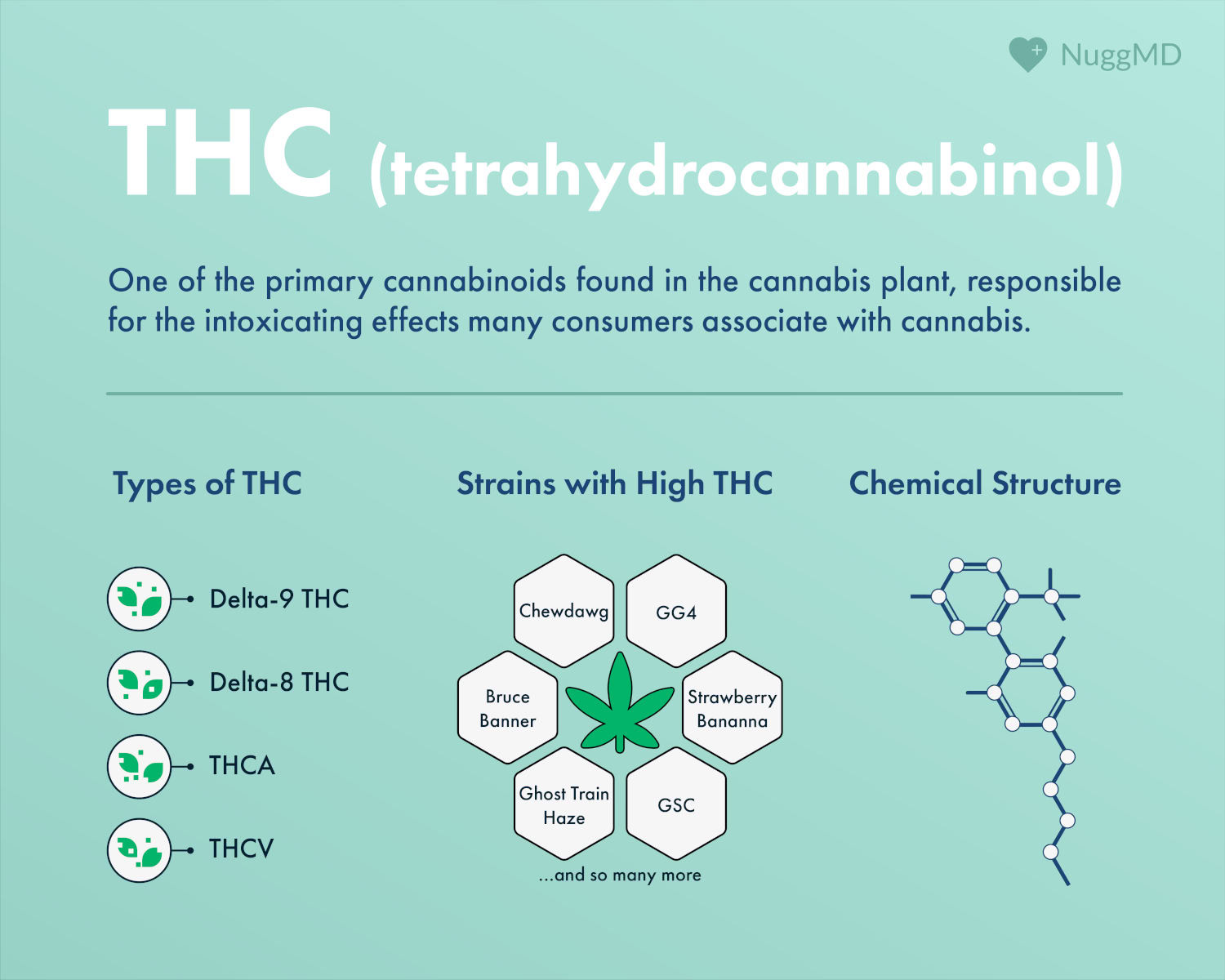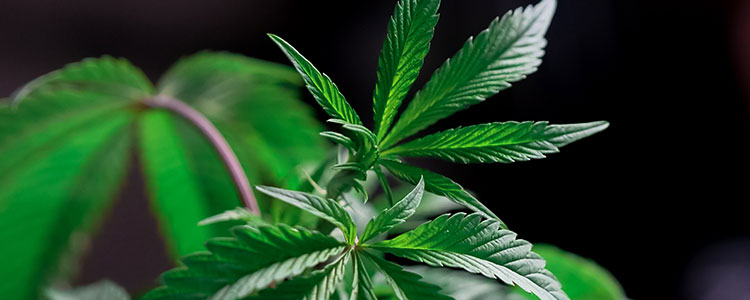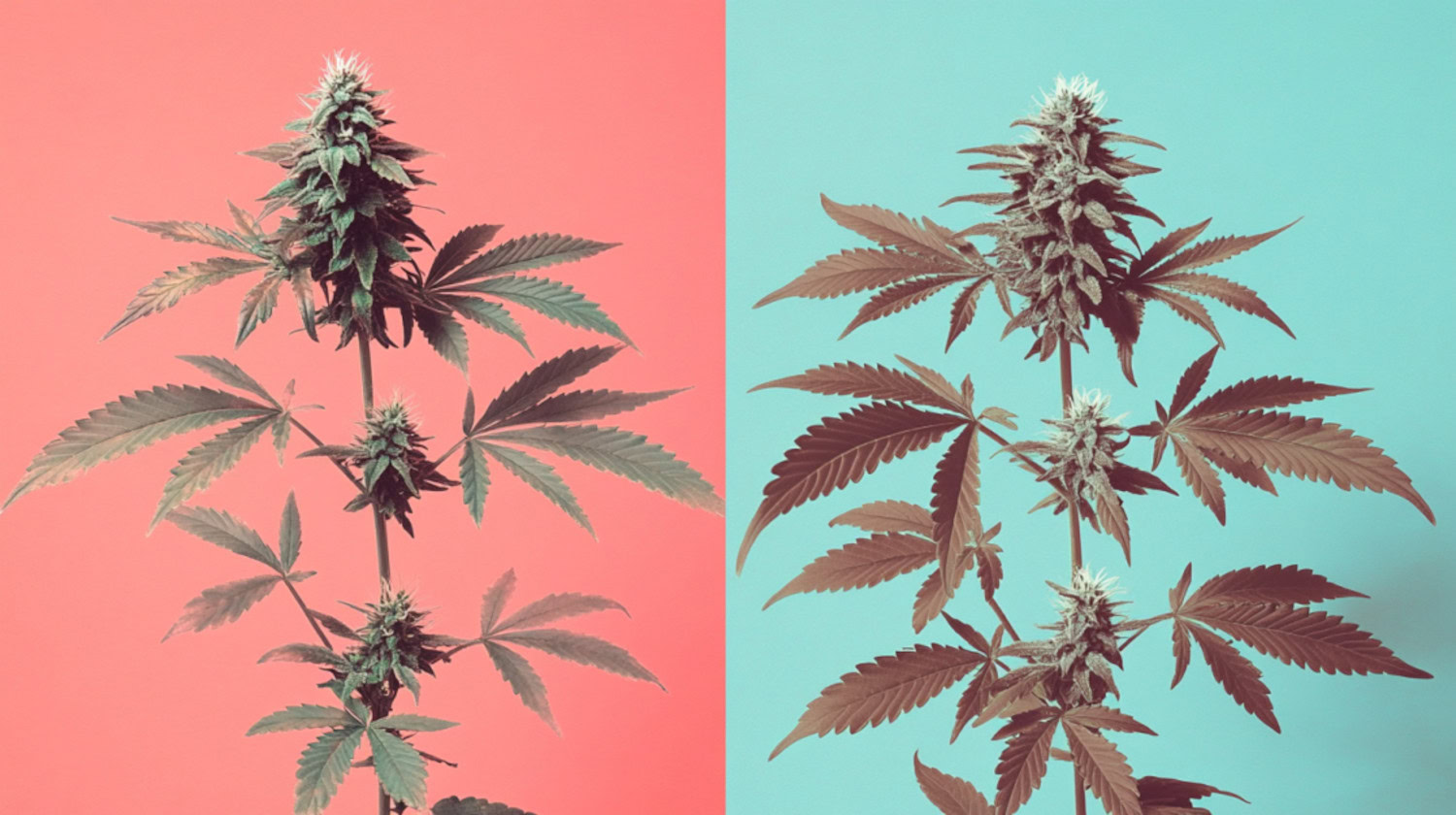Most people are familiar with the intoxicating effects associated with cannabis. Still, few know about the chemical compound that causes the intoxicating effect, much less how it works to produce the iconic “high” of cannabis. Maybe you’ve heard the acronym, but you’ve been wondering: just what is THC?
THC, or tetrahydrocannabinol, is part of a larger group of chemical compounds created by the cannabis plant called cannabinoids.
How Do Cannabinoids Work?
There are over 100 known cannabinoids that the cannabis plant naturally creates, but the two best-known and most common are CBD and THC. THC produces many of the beneficial effects of cannabis, including the intoxicating ones.
The cannabis plant excretes cannabinoids in a resin from glands, known as trichomes, around its flowers. Cannabinoids appear to be a byproduct of the plant’s normal metabolic processes. Labeled as “secondary metabolites,” many scientists theorize that cannabinoids may play a role in the plant’s defenses.
While the purpose of cannabinoids in the cannabis plant is unclear, they do serve a clear function in the human body. To understand exactly how THC works, you need some background.

Inside our bodies, and the bodies of other mammals, the endocannabinoid system regulates many vital functions, like immune response, appetite, and communication between cells. This endocannabinoid system is distributed throughout the body and brain, and it serves different functions, depending on where its receptors are located. There are two types of endocannabinoid receptors, CB1 and CB2. Normally, the body produces its own cannabinoids, called endogenous cannabinoids, that bind to these receptors to send signals.
The body’s internal cannabinoids are different from the ones the cannabis plant creates, but they are chemically similar enough that the plant’s cannabinoids can bind to the same receptors in the body. When this happens through the ingestion of cannabis, it triggers different effects depending on which receptors it binds with.
How Does THC Affect the Body?
THC affects the body by binding to cannabinoid receptors in place of the body’s endogenous cannabinoid, anandamide. So, instead of nerve cells receiving the exact messages they were supposed to via anandamide, they receive a somewhat muddied signal with THC.
In the brain, most cannabinoid receptors are located in the parts that are associated with memory, logical thinking, pleasure and rewards, time perception, fear and emotion, and coordination.
So, when THC binds to receptors in the pleasure center for the brain, it helps to create the sense of euphoria typically associated with marijuana. In the part of the brain the governs fear, it can either relieve stress or – for some users or strains – it may create feelings of anxiety and paranoia.
What to Expect When Consuming THC
The effects of THC can vary based on the consumer and the quantity consumed. In fact, there’s no way to be 100% certain of the effects THC will have, even if two consumers have the exact same amount of the exact same strain. THC can be relaxing or it can cause anxiety. It can make you feel energized, or it can make you sleepy.
That’s not to say the effects of THC are random, only that there’s room for variance, and both medical and recreational consumers should be aware of the range of potential outcomes.
So what causes the varying effects?
The effects of THC can differ based on concentration. The difference between relaxation and paranoia usually comes down to how much THC is consumed and how high the person’s tolerance is.
The way you consume THC matters too. Smoking THC will deliver it through your body differently than eating an edible. There are even differences between cannabis strains based on the THC concentration and the other cannabinoids present (known as the entourage effect).
Your body will also play a major role in how THC affects you. Sure, tolerance is part of that equation, but your diet, hydration, and individual body chemistry can all have a significant impact on the effects you experience.
Different Types of THC
Thanks to the chemistry within the cannabis plant, there are multiple types of THC. They’re all chemically very similar, but slight variations result in noticeable differences.
- Delta-9 THC: This is the most common form of THC. It’s one of the primary cannabinoids found in the cannabis plant, and it’s what people are usually referring to when they talk about THC.
- Delta-8 THC: Delta-8 is a much less common cannabinoid found naturally in the cannabis plant. However, most commercially available delta-8 THC products contain a form synthesized in a lab. Delta-8 gives a more clear-headed and less severe high.
- Delta-10 THC: The cannabis plant produces only trace amounts of delta-10, so like delta-8 THC, most of it is created in a lab. Delta-10 hasn’t been studied much, but it is known to cause a much milder high.
- THCA: THCA, or tetrahydrocannabinolic acid, is an acidic compound that the cannabis plant naturally creates and that converts to the intoxicating delta-9 THC upon being heated. THCA is currently being researched for a variety of potential benefits, with early studies focusing on whether it can help fight cancer, protect the nervous system, reduce nausea, and fight inflammation.
- THCV: THCV, or tetrahydrocannabivarin, is a minor cannabinoid, but it may be more abundant in certain strains. THCV doesn’t produce intoxicating effects like delta-9 THC, but it has been reported to help fight stress and boost energy. Oddly, THCV suppresses appetite, while other forms of THC stimulate it.
History of THC
People have been using cannabis medicinally for 3,000 years. It wasn’t until 1964, though, scientists uncovered the cannabinoid responsible for so much of the plant’s power.
In 1964, chemist Raphael Mechoulam, while studying hashish, was able to isolate and extract THC, officially kicking off cannabis research as it is known today. Mechoulam’s research led to the discovery of other cannabinoids, like CBD. Eventually, that would bring about the discovery of the body’s endocannabinoid system.
Thanks to that ongoing research, 37 states in the U.S. have legalized medical marijuana as of early 2022.
Reported Benefits of THC
There is a wide range of conditions THC is reported to help with. Some are more well-researched and better understood than others. However, for all of these conditions, further clinical studies are needed in order to understand best the role THC may play in supporting treatment efforts.
- PTSD
- Chronic pain
- Insomnia
- Nausea
- Inflammation
- Arthritis
- Migraines
- Cancer
- Crohn’s disease
- Fibromyalgia
- Alzheimer’s disease
- Multiple sclerosis
- Glaucoma
- ADHD
- Sleep apnea
- Appetite loss
Risks & Side-Effects of THC
When it comes to the long-term side effects of THC, there isn’t much conclusive evidence. It is expected that many current theories on the side effects and benefits of THC are likely to change as more research is done.
Potential risks of using THC are:
- Increased tolerance
- Throat irritation (if smoking or vaping)
- Cannabis Use Disorder (CUD)
- Cannabinoid Hyperemesis Syndrome (CHS)
- Anxiety
- Paranoia
- Appetite stimulant / suppressant
Some consumers also report withdrawal symptoms after stopping cannabis use. However, these are generally less severe than symptoms associated with quitting alcohol and other drugs and include irritability and difficulty sleeping.
Common Ways to Consume THC
There are plenty of ways to consume THC. As you’d expect, smoking is easily the most common. Cannabinoids like THC can also be extracted to create concentrates. Vapes are a fairly common way to use cannabis extracts, but you’ll also find dabs, resins, and other concentrates available.
Cannabis can also be heated to decarboxylate or activate the THC, so you can cook with it. Ready-made edibles are also commonly available with set THC dosages. For pain relief, you can find topical products infused with THC, like lotions, balms, and medicated patches.
The information in this article and any included images or charts are for educational purposes only. This information is neither a substitute for, nor does it replace, professional legal advice or medical advice, diagnosis, or treatment. If you have any concerns or questions about laws, regulations, or your health, you should always consult with an attorney, physician or other licensed professional.




